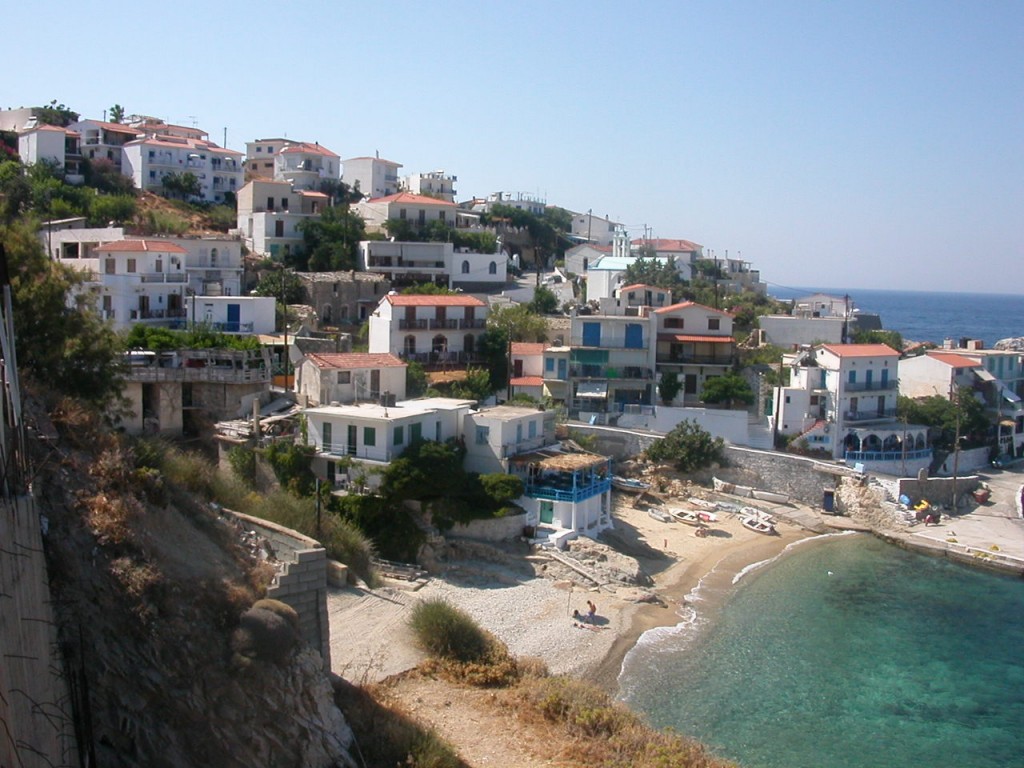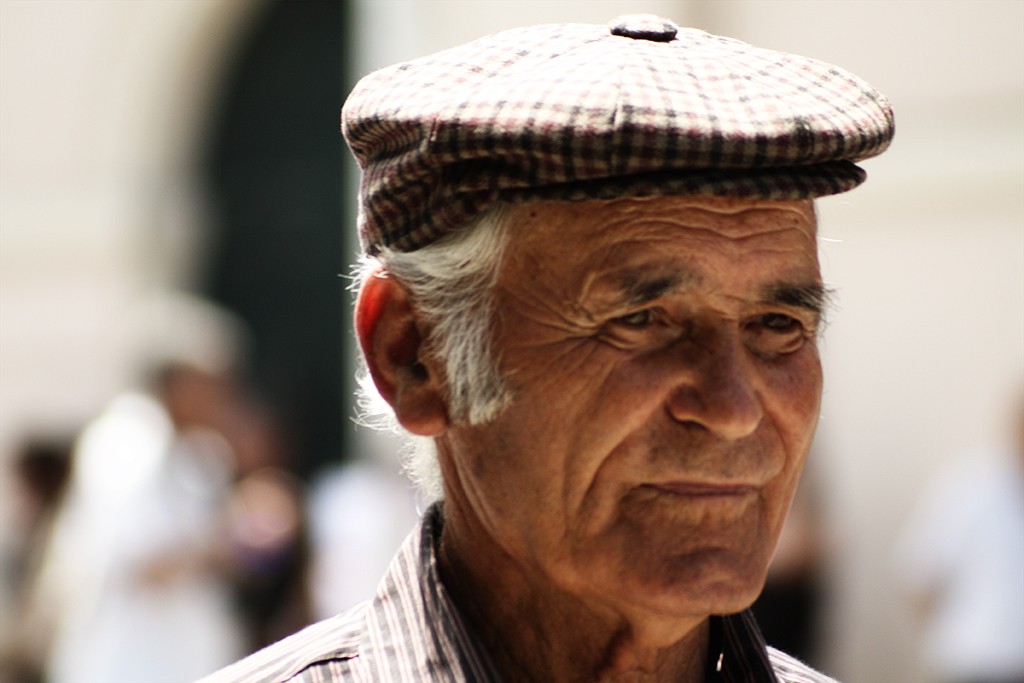Have you ever wondered what are the keys to living a long, happy life?
Even with advances such as sanitation and medicine, life expectancies still vary considerably around the world. For example, the country boasting the highest life expectancy is Japan at a whopping 84 years. This falls down to 79 years in the U.S., 60 in South Africa, and an incredible 46 years in Sierra Leone (1)
For many years researchers have been intrigued by places in the world that boast long life expectancies. As early as 1958, they began to study these areas to find out why some people not only live longer but they also seem to enjoy a high quality of life throughout their years (2, 3, 4).
More recently, National Geographic Journalist Dan Buettner led a team of research scientists on multiple expeditions to these areas to learn more about their way of life (5). He used the term “Blue Zones” to describe the areas with high life expectancy and seemingly high quality of life. These locations include Ikaria (Greece), Okinawa (Japan), Sardinia (Italy), Nicoya Peninsula (Costa Rica), and Loma Linda, California (United States).
Research suggests that longevity may be partly due to genetic variations that resist chronic disease. However, behavioral factors are believed to play a large role (6). Researchers believe these behaviors are keys to longevity and a higher quality life. In other words, you don’t have to actually live in a designated “Blue Zone” to reap some of these benefits.
Characteristics of the Blue Zones
The Blue Zones appear to share four common behaviors that likely play a large role in longevity.

1) Eat Right
All of the Blue Zones enjoy a diet that is rich in minimally processed plant foods such as vegetables, fruits, beans, potatoes, and whole grains.
Interestingly, the macronutrient distribution ranges and accessory foods do vary. For example, the Traditional Okinawan diet is very high in carbohydrate (85%), low in protein (9%), and very low in fat (6%) (7). The carbohydrates tend to come from large portions of low energy density, high nutrient density foods such as green and yellow vegetables, soy products like tofu, seaweed, and purple sweet potatoes that are common to the region.
This contrasts greatly with the traditional Mediterranean diet that is characteristic of Ikaria, Greece. It may consist of more than 30-40% calories from primarily unsaturated fats and smaller contributions from carbohydrates and protein (8). Importantly, the higher fat diet of Ikaria contrasts sharply from the burgers, fries, and pizza that are common in the Western diet. Instead, Ikarians consume very large amounts of vegetables and fruits that exceed recommended intakes. Green vegetables and wild plants are commonly eaten as a salad and then cooked in olive oil for a main dish (9). Despite the high percentage of calories from fat, the eldest portion of the Ikarian population only consumes about 1,000-1,500 calories per day (10).
Apparently, humans are fully capable of thriving on a wide variety of macronutrient distributions ranges (carbohydrates, proteins, fats) as long as we focus on eating the right kinds of foods. An important study called the OMNI (Optimal Macronutrient Intake) Heart Trial came to the same conclusion. Research consistently demonstrates that the healthiest diets are based on a wide variety of plant foods that are minimally processed–vegetables, fruits, whole grains, potatoes, legumes, nuts, and seeds.
What about meat and alcohol?
Intake of animal foods and alcohol is generally kept to a minimum in all of the Blue Zones. The Seventh Day Adventists of Loma Linda, California promote a vegetarian diet and abstinence from alcohol (11). In fact, the Adventist Health Study-2 found that vegetarians tended to have lower rates of metabolic syndrome (12), cardiovascular disease (13), type 2 diabetes (14), obesity (15), and cancer (16) than non-vegetarian Adventists.
The main sources of protein in the traditional Okinawan diet are legumes, such as soybeans and tofu (17) but small amounts of meat may be served as an accompaniment to the meal (18) Nicoyans eat a high fiber diet with beans, rice, and small portions of animal protein (19) while many Ikarians enjoy fish (20). Sardinians enjoy moderate amounts of red wine, small portions of animal proteins, and an omega-3 rich sheep milk cheese (21).
Whether you choose to be a vegetarian or not, the optimal diet is based largely on minimally processed plant foods.

2) Stay Active
Not surprisingly, the Blue Zones tend to be environments that support active living. As seen in the picture of Ikaria above, daily physical activity is virtually required due to the mountainous terrain.
Daily walking in the Blue Zones is common as a means of transportation to visit a friend, a place of worship, or a store.
Indeed, physical activity is strongly associated with reduced premature morbidity and mortality. According to the Surgeon General’s Report, “significant health benefits can be obtained by including a moderate amount (e.g., 30 minutes or more) of physical activity on most, preferably all days of the week” (22). Greater benefits can be gained by greater amounts of physical activity.
These health benefits may include lower rates of cardiovascular disease, stroke, type 2 diabetes, certain forms of cancer, osteoporosis, metabolic syndrome, and obesity. Physical activity has also been associated with improvements in feelings of “energy”, mood, anxiety, depression, stress, cognitive function, sleep, self-esteem, functional capacity, and overall quality of life.
To learn more about how exercise improves dozens of health outcomes, click here.
3) Have a Sense of Purpose, Hope, Happiness, and Contentment
Mental and spiritual well-being are vital components of longevity.
According to Buettner, people in the Blue Zones experience stress just like the rest of us. What sets them apart is the ways that they learn to cope. Okinawans take a few moments each day to remember their ancestors, Adventists pray, Ikarians take a mid-day nap, and Sardinians enjoy a glass of afternoon wine with others (23).
Buettner also reports that the overwhelming majority (258 out of 263) of the centenarians that they interviewed belonged to a faith-based community (24). Spiritual health has been associated with better health and longer life span, decreased rates of suicide, decreased rates of alcohol and drug abuse, and greater levels of happiness and life satisfaction (25). Hundreds of studies have reported that spiritual well-being helps people to cope with a wide range of illnesses and stressful situations such as physical ailments, stress, natural disasters, war, and death (26). Spiritual health is also positively associated with hope, optimism, kindness and compassion toward others, and meaning and purpose in life (27).
Okinawans call it “ikigai”; Nicoyans call it “plan de vida.” Both of these translate to “why I wake up in the morning” (28). Having a strong sense of purpose and hope seem to be vital components of longevity.
4) Establish and Maintain Relationships with Others
The Blue Zones place a strong emphasis on relationships with others. This may include committing to a life partner, caring for children and aging parents, or spending time with friends. We need the support of others to maintain a long, happy life. Equally important is feeling that we are making a difference in the lives of others through our own kindness and compassion.
One of the greatest documented examples of the effect of social relationships on health is the “widowhood” effect (29). Spousal bereavement has been associated with increased mortality rate, especially during the first 12 months after loss. This means that after the death of a spouse, the surviving spouse is more likely to pass away over the next year.
The death of a spouse from all almost all causes (e.g., infection, cancer, heart disease) has been associated with increased mortality rate from all causes in the surviving spouse. It does not appear to be related to one aspect of human biology. Despite the substantial amount of research on this topic, the causes of the “widowhood effect” are still unclear (30, 31, 32, 33, 34, 35).
Strong relationships are an important aspect of longevity.
Bottom Line
Even though we may not live in a Blue Zone, we can incorporate some of their common characteristics to improve our own longevity and quality of life. To spread the word, Buettner’s team has developed the Blue Zone Project. This systems approach uses the collaboration of citizens, schools, employers, restaurants, grocery stores, and community leaders to establish policies and programs that support better health and well-being in the community. Learn more at Bluezones.com.



